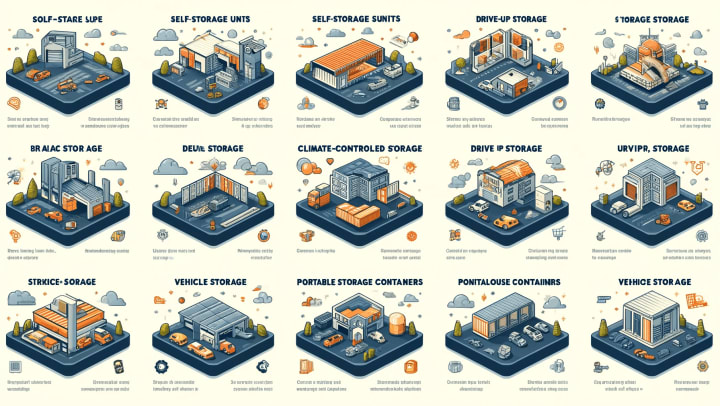Introduction:
Choosing the right type of storage can be crucial depending on what you need to store, how often you need to access your items, and where you are located. This guide will explore various storage types and their specific benefits to help you make an informed decision.
Chapter 1: Overview of Storage Types
- Self-Storage Units: These are the most common storage solutions available. Customers rent individual units within a facility and have the flexibility to access their belongings during business hours.
- Climate-Controlled Storage: Designed to protect sensitive items from extreme temperatures and humidity levels. Ideal for storing antiques, musical instruments, electronics, and important documents.
- Drive-Up Storage: Offers the convenience of loading and unloading directly from a vehicle, similar to a garage. Perfect for storing large items like furniture or heavy boxes.
- Vehicle Storage: Includes specialized options for cars, boats, RVs, and motorcycles, either in covered, uncovered, or enclosed spaces.
- Portable Storage Containers: Containers are delivered to your home, where you can load them at your convenience. Once filled, they can be kept on your property or moved to a storage facility.
- Warehouse Storage: Suitable for commercial needs, offering large-scale storage spaces for inventory, machinery, or bulk items.
Chapter 2: Choosing the Right Storage for Your Needs
- Assessing Your Items: Understanding what you need to store and any special requirements such as temperature control or additional security.
- Accessibility Needs: How often you'll need to access your items and if drive-up access is necessary.
- Security Requirements: Evaluating the security measures in place at different storage facilities, including surveillance systems, gated access, and on-site personnel.
Chapter 3: Cost Considerations
- Budgeting for Storage: Comparing costs between different types of storage and understanding the factors that influence pricing, such as location, unit size, and additional features like climate control.
- Long-Term vs. Short-Term: Deciding based on how long you plan to store your items, as some facilities offer discounts for long-term contracts.
Chapter 4: Preparing for Storage
- Packing and Organization: Best practices for packing different types of items to ensure they are well-protected while in storage.
- Insurance and Documentation: The importance of insuring your items and maintaining an inventory list for easy management and in case of claims.
Conclusion:
With various storage options available, understanding the specifics of each type can help you choose the best solution for your storage needs. Whether for personal or business use, selecting the right type of storage will ensure your items are safe, accessible, and well-maintained.
Call to Action:
Consider what you need to store, evaluate the different storage options available near you, and select the one that best fits your requirements and budget.

